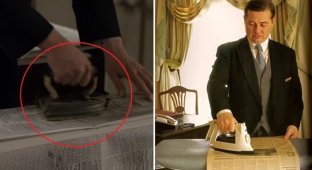Andre Norton - the first lady of science fiction (12 photos)
For a long time, women occupied a purely secondary position in science fiction. As characters, they were supposed to be the objects of desire for aliens, monsters and supervillains, constantly squealing and fainting in the arms of male saviors. The lot of female authors was also predetermined - to write adventure stories for girls, the vast majority of whom had not read science fiction at all. 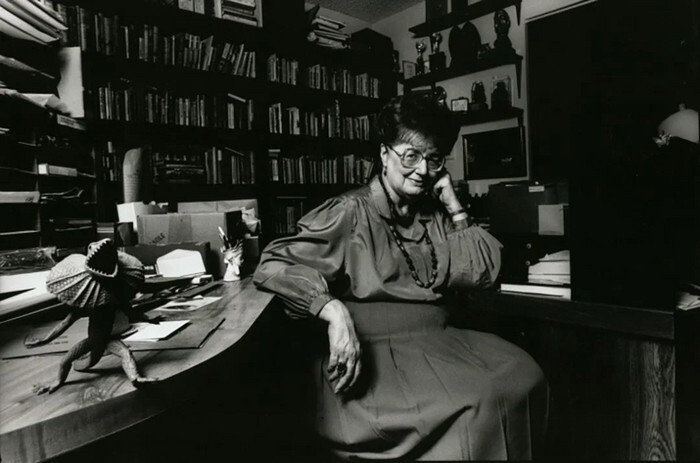
No wonder that writers who tried to change the current situation had to resort to all sorts of tricks!
I write the kind of books that I like to read myself.
Andre Norton
If there was a woman’s name on the cover of the book, then a normal consumer of fantasy stories would not even pick up such “muck”! Naturally, publishers kept their noses to the wind, so women who wanted to write science fiction usually hid under male pseudonyms. Or they put an indefinite signature, by which it was impossible to identify the author’s gender - for example, K.L. Moore or Leigh Brackett. One of these “victims” of public prejudice was the future First Lady of science fiction, Andre Norton. 
Cleveland 1912
Simple life
On February 17, 1912, in the city of Cleveland (Ohio), the owner of a small carpet manufacturing company, Adalbert Freeley Norton, at a fairly advanced age, became a father for the second time. After the birth of their eldest daughter, the Nortons were looking forward to having another child - and suddenly such a surprise! The newborn was named Alice Mary, and the girl received her main name in honor of the heroine of the famous fairy tale by Lewis Carroll - Bertha Stemm Norton really loved this book. The future writer was lucky with her parents - her mother loved to read, and the head of the family treated books with respect. Every Saturday, the Nortons went to the public library, where they collected books for future use. At first, the mother read aloud to her daughter, and when Alice mastered reading and writing herself, it was impossible to pull her away from the books. They became the girl’s main friends: the 17-year difference turned out to be an insurmountable barrier in communicating with her older sister.
Parents actively encouraged their daughter’s hobby - for example, they bought her books for good grades. And Alice herself spent almost all her pocket money visiting a large bookstore, where sales were regularly held. It is no wonder that the girl took up the pen - she composed her first story at the age of ten. Alice received considerable help from Collinwood School literature teacher Sylvia Cochrane, whom Norton remembered fondly many years later. Soon Alice became an employee of the school newspaper "Spotlight", on the pages of which her stories regularly appeared. And then the girl wrote her first novel, “The Luck of the Railstones,” and two more books, which, however, “sat on the table for a long time.” 
Debuts Andre Norton
After graduating from school, eighteen-year-old Alice decided to become a teacher, for which she entered Cleveland Western University. However, the time for studying was chosen inappropriately - after the crisis of 1929, the country was floundering in the abyss of the Great Depression. Norton's parents had a hard life, and they could not support Alice financially. The girl had to leave the university and go to work in the children's department of the Cleveland library system. At the same time, Alice took evening courses in journalism - she wanted to properly learn how to write herself. And not in vain...
In 1934, Norton's debut novel, the historical adventure The Prince Commands, was published (the third of those she wrote while at school). It was then that Alice changed her name - and it was not just a simple pseudonym. The girl officially became Andre Alice Norton, which gave her the right to sign her works “like a man.” Now, perhaps, such scrupulousness looks strange, but in those days the concepts of “reputation” and “decency” were not an empty phrase. However, Alice did use the pseudonyms Andrew North and Alan Weston a couple of times. 
The Library of Congress is a place for the elite
At first, Norton wrote adventure and detective books for teenagers; fortunately, working in a children's library gave her the opportunity to tap into the interests of the younger generation. The books were published sporadically and did not enjoy fame - so, a small extra income, nothing more. And then simply no one would undertake to publish Norton’s fiction. Her first science fiction story, “People of the Crater,” was publishedThe Fantasy Book was published only in 1947.
Several times Alice tried to change her life. In 1940-1941, she participated in a special government program for the naturalization of foreigners, thanks to which she ended up in the cataloging department of the largest Library of Congress in the country. True, after the United States entered the war, the project was closed, and Norton lost her position. With the money she earned, she bought a small bookstore in the Maryland town of Mount Rainer. However, the shop with the romantic name “Mysterious House” quickly went bankrupt. I had to return to Cleveland, to the library, where Alice worked until 1950. Then the head of the Gnome Press publishing house, Martin Greenberg, invited Norton to the position of editor, putting her on her own to study the submitted manuscripts. After 8 years of literary “hard labor” (what kind of nonsense I had to re-read!) Andre Norton completely switched to her own writing career. 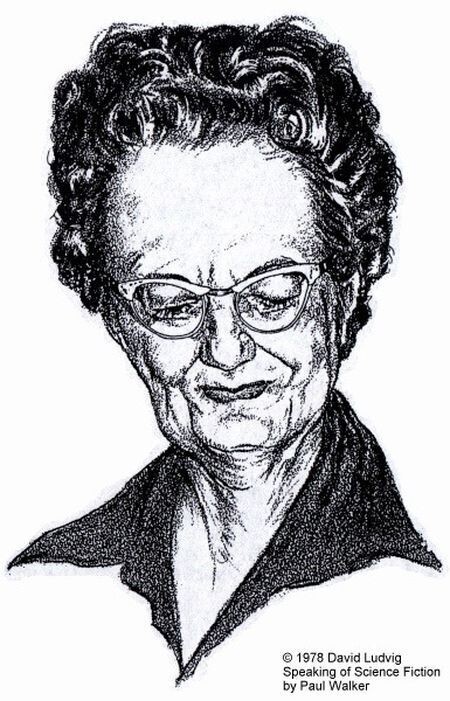
Cartoon by David Ludwig, 1978
Pioneers of the Galaxy
In the 1950s, Norton finally achieved a fairly high reputation in the field of adventure fiction. Many processes that determined the face of world science fiction literature for decades to come originated then. One of them is a surge of interest in SF among young people, caused by technological advances, especially in the field of rocketry and astronautics. It is not for nothing that Robert Heinlein’s books were so popular, aimed specifically at the young post-war generation, a significant part of which fell in love with science fiction for the rest of their lives.
Norton, of course, was inferior to the main American science fiction writer in popularity, and her space operas were not as original. However, the writer managed to unusually successfully adapt the classic space opera in the spirit of Hamilton and Doc Smith to the needs of youth. Over the course of 10 years, Norton published 20 novels and several collections, becoming, along with Heinlein, the flagship of teenage fiction of those years. The most famous were her novels “The Son of the Star Man” (1952), “The Master of the Beasts” (1959), and the “Traders in Time” series. Among Norton’s books of this period, the most in demand is the cycle about the crew of the starship “Queen of the Sun.”
Most of Norton's adventure books take place on terramorphic planets. There is a rich flora and fauna there, described in great detail, because it directly affects the plot. Animals play a special role - both ordinary terrestrial ones and alien ones, developed by the author very carefully. They are often sentient, interacting as equal partners with human heroes - usually using telepathy. In the worlds born of the writer’s imagination, there are often numerous artifacts of ancient civilizations - from Cyclopean structures to exotic little things. Many of Norton's SF novels, which are in no way connected by plot, are united by the presence of fragments of the Forerunner culture - a supercivilization that has long disappeared to God knows where.
Norton's heroes are usually loners, capable of showing initiative and resourcefulness in critical situations. Before the reader's eyes, teenage characters overcome unimaginable difficulties, gradually developing as individuals. However, Norton's didacticism never degenerates into lisp or boring moralizing. Her literary style is devoid of any special refinements, but it is crystal clear, evoking the reader’s trust with its sincerity.
When I write books for teenagers, my main rule is no simplification! You can't insult a reader's intelligence, especially a science fiction reader—even if he's in the third grade of high school.
Andre Norton 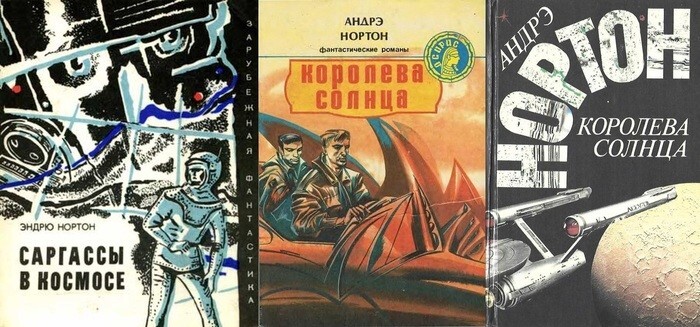
Queen Norton
When Andre Norton's novel Sargasso in Space, the first part of a series about rogue traders from the Sun Queen, was published in the USSR in 1969, the book created a sensation. The translators of the novel were the Strugatsky brothers, who hid under pseudonyms, thanks to which the rather ordinary text sparkled with bright colors. But most importantly, traditional space opera was a piece of goods for Soviet readers. There is no ideological tension: dashing heroes, incredible adventures and, most importantly, a completely special “wind of prey, wind of luck”, so unusual for Soviet SF. By the way, it was Norton’s novels about the Witch World that later opened up the fantasy genre for many.
Be a witch
In 1963, Norton released the novel The Witch World, which became the main milestone of her work and opened the most popular series. However, the appearance of the novel did not at all cause the “and woke up famous” syndrome - the popularity of the cycle grew gradually, book by book. 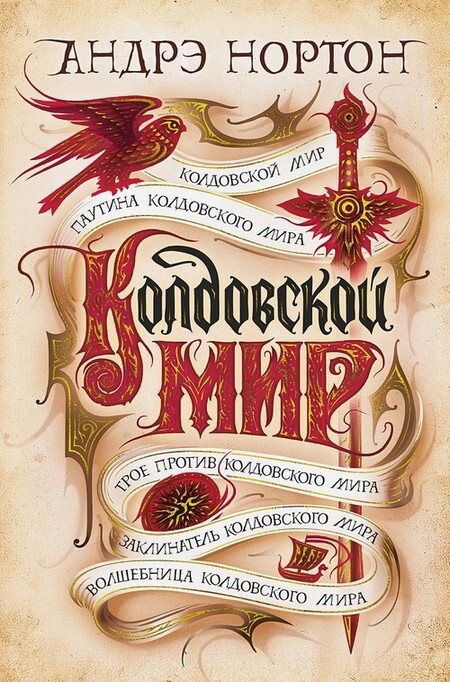
At first, Norton adhered to the conventional scheme - the story of the adventures of a modern man who found himself in another world. The initial novels told the story of former Colonel Simon Tregarth, who, while hiding from gangsters, finds himself in a world of magic. More precisely, Tregarth is the hero of only two books, followed by his children. If Norton had started churning out endless sequels, the series could easily have degenerated into ordinary commercial rubbish. However, the writer relied on the development of the whole world, step by step unfolding before her readers a vast panorama of a different reality, vaguely similar to the earthly Middle Ages. The result is more than three dozen novels and collections, some of which, however, were written “in collaboration” (more precisely, they were written by younger writers, guided by the ideas and advice of the demiurge of the World of Witches).
At first, I had no idea about starting any kind of cycle. For the first novel, I used fragments written long ago for historical adventures from the Crusades.
Andre Norton
The series is divided into several sub-cycles, the action of which takes place in different parts of the Witch World and over many centuries. The Tregarth family and characters from several separate works happen in Estcarp. The sub-cycle about Upper Halleck in the north of the Witchworld is based on legends of Celtic and world folklore. There is also the “Tales” of the Sorcerous World, its “Great Change” - all together they make up an impressive fantasy universe! 
Norton and company
Andre Norton’s contribution to fantasy was not limited to the “Witch World.” Solo, she wrote a “magical” series of loosely connected teenage novels and a dozen separate books. Norton’s collaboration with other authors, usually women, turned out to be much more fruitful.
The first experience of co-authorship was the detective story Murders For Sale, published back in 1954, written together with Grace Allen Hogarth. The next co-author was the writer's mother - this is how the children's book Bertie and May (1969) appeared. And since the 1970s, joint books have started to fall apart. Just look at the dynamics of the appearance of such works - in the first 40 years of creativity there were only 4 books “co-authored”, and since the mid-1970s there have been about fifty of them. 
For aspiring authors, Norton has become a kind of symbol - no wonder she was bombarded with requests to familiarize herself with the works of debutants. Norton did not refuse, generously sharing her experience. She developed friendly relationships with many, which gradually developed into creative collaboration.
Due to her age and illness, it was already difficult for Norton to work actively - at least at the same pace as before, because most of the “joint” books were written by her younger colleagues. Norton herself played the role of editor or supplier of ideas and mentor. This explains the amazing thematic, genre and stylistic diversity of books published under Norton’s signature - after all, they were written by different people. However, among Norton’s “co-authored” works there are many more creative projects - for example, the fantasy cycle “Trillium”, in the composition of which the eminent Marion Zimmer Bradley and Julian May took part. Among Norton's co-authors were other famous writers - Robert Bloch, Mercedes Lackey, Susan Schwartz, Rosemary Edhill. However, there are also many unknown ladies who used cooperation with Norton for promotion. And it's much easier for publishers to sell books with Andre Norton's name on the cover. Who knows Sasha Miller or Lynne McConchie? However, despite her age, Andre Norton continued to work hard on her own. 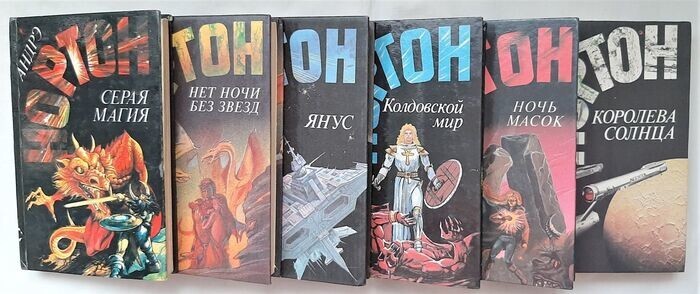
This is interesting
In the original, Norton’s most famous cycle is called Witch World, but a modified name was adopted due to the negative perception of the word “witch”.
Andre Norton Award winners include Holly Black (2005), Justina Larbalestier (2006) and Joan Rowling (2007). So far, only women have won the prize.
Norton was a member of SAGA (Swordsmen and Sorcerers' Guild of America), a society of the most famous English-language authors of heroic fantasy. It was founded by Linn Carter, and in the depths of the society the idea of the Gandalf Award was born, which became an analogue of the title Grandmaster in the field of fantasy. The core of the Society also included Paul Anderson, Lion Sprague de Camp, John Jakes, Fritz Leiber, Michael Moorcock and Jack Vance. They were later joined by Caroline Cherry, Diane Duane, Craig Shaw Gardner, Ava Davidson, Katherine Kurtz, Tanith Lee and Roger Zelazny.
Andre Norton named Edgar Burroughs, Abraham Merritt, and John Tolkien as her favorite science fiction writers., Bim Piper, Alan Garner, Caroline Cherry, Poul Anderson, Roger Zelazny, Sprague de Camp, Keith Laumer and Anne McCaffrey.
In addition to reading science fiction, Norton was interested in history, archaeology, sewing and cats.
From Here to Eternity
Professional critics ignored Andre Norton for a long time, but eventually they took notice of the increasing quality of her work. Thanks to perseverance, hard work and talent, Norton became, in fact, the first female science fiction writer to achieve significant fame. In 1965, she received the Teenage Boys Club of America Award, in 1977, the Gandalf Grand Master of Fantasy Award, and in 1983, she became the first woman to receive the Damon Knight Nebula Grand Master Award. A year later - the Jules Verne Prize, and there were other honorary awards in her collection. And most importantly, Norton has gained universal recognition as the First Lady of Science Fiction! Any official titles pale in comparison to something like this. 
Due to health problems, in 1966 the writer left for warm Florida, settling in the town of Winter Park, where she lived for 30 years. She spent her last years (since 1998) in another provincial town, Murfreesboro, in Tennessee (the writer clearly did not like large cities). Near the local university, she founded High Hallack, a special library for science fiction writers.
Norton’s personal life did not work out. But there were admirers, friends, favorite books and a house full of cats she adored.
Alas, nothing lasts forever - years fly, life passes: On March 17, 2005, Andre Norton’s heart stopped, the outstanding writer was 93 years old. A month earlier, the Science Fiction Writers of America established the Andre Norton Award, an award for achievements in the field of children's and youth fiction.

















